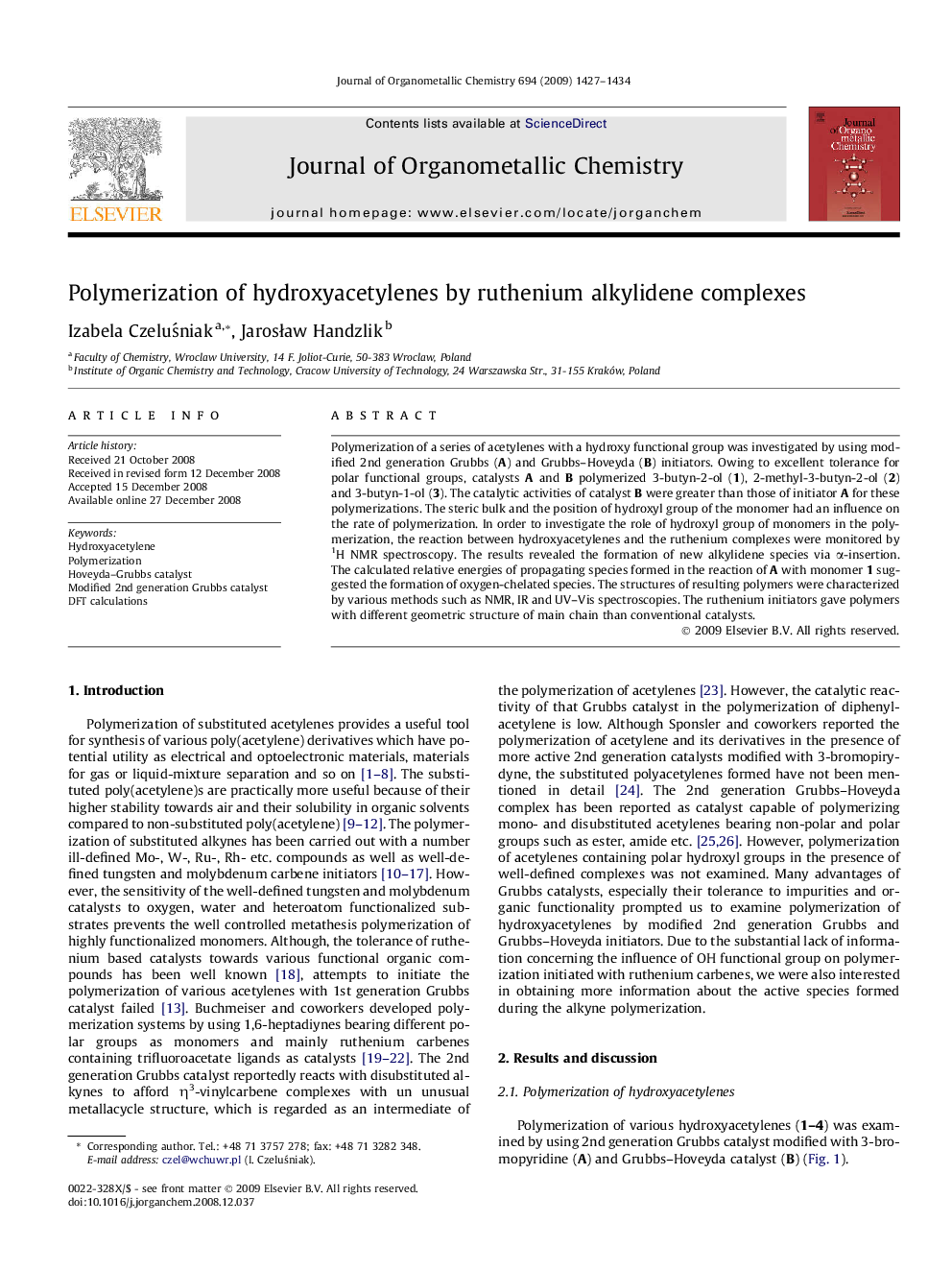| Article ID | Journal | Published Year | Pages | File Type |
|---|---|---|---|---|
| 1325262 | Journal of Organometallic Chemistry | 2009 | 8 Pages |
Polymerization of a series of acetylenes with a hydroxy functional group was investigated by using modified 2nd generation Grubbs (A) and Grubbs–Hoveyda (B) initiators. Owing to excellent tolerance for polar functional groups, catalysts A and B polymerized 3-butyn-2-ol (1), 2-methyl-3-butyn-2-ol (2) and 3-butyn-1-ol (3). The catalytic activities of catalyst B were greater than those of initiator A for these polymerizations. The steric bulk and the position of hydroxyl group of the monomer had an influence on the rate of polymerization. In order to investigate the role of hydroxyl group of monomers in the polymerization, the reaction between hydroxyacetylenes and the ruthenium complexes were monitored by 1H NMR spectroscopy. The results revealed the formation of new alkylidene species via α-insertion. The calculated relative energies of propagating species formed in the reaction of A with monomer 1 suggested the formation of oxygen-chelated species. The structures of resulting polymers were characterized by various methods such as NMR, IR and UV–Vis spectroscopies. The ruthenium initiators gave polymers with different geometric structure of main chain than conventional catalysts.
Graphical abstractInvestigation of polymerization of acetylenes with a hydroxy functional group initiated by modified 2nd generation Grubbs and Grubbs–Hoveyda initiators reveals, that the steric bulk and the position of hydroxyl group of the monomer influence the rate of polymerization. The calculated relative energies of propagating species formed in the reaction of modified 2nd generation Grubbs catalyst with the hydroxyacetylene suggested formation of oxygen-chelated species.Figure optionsDownload full-size imageDownload as PowerPoint slide
